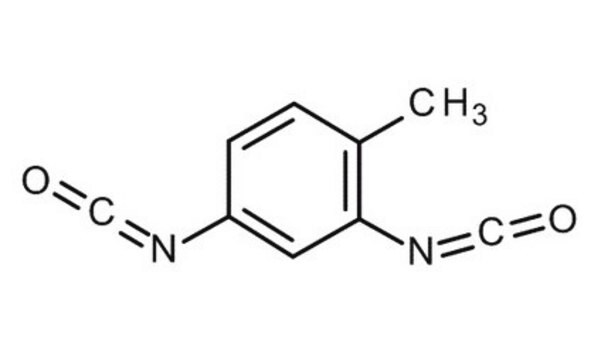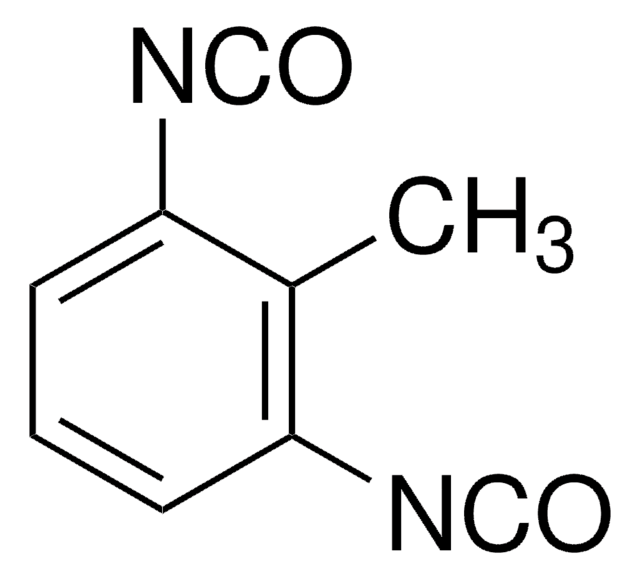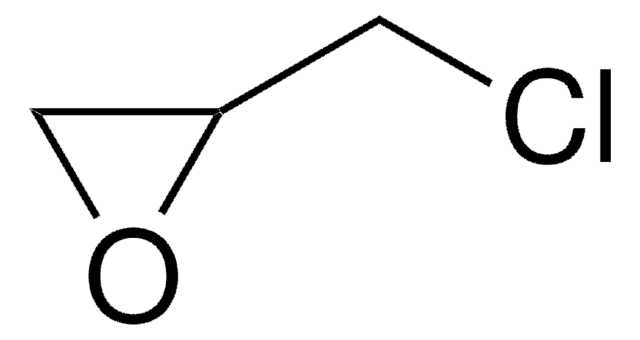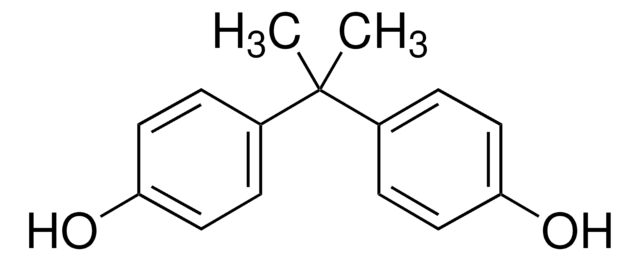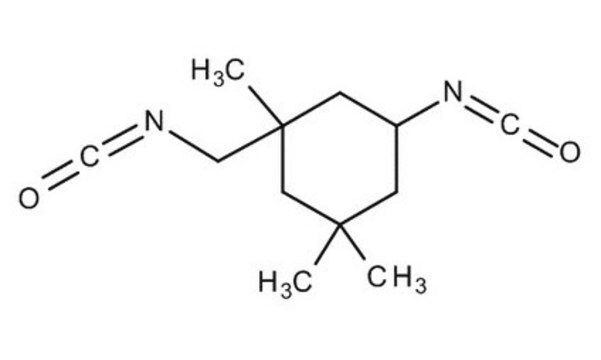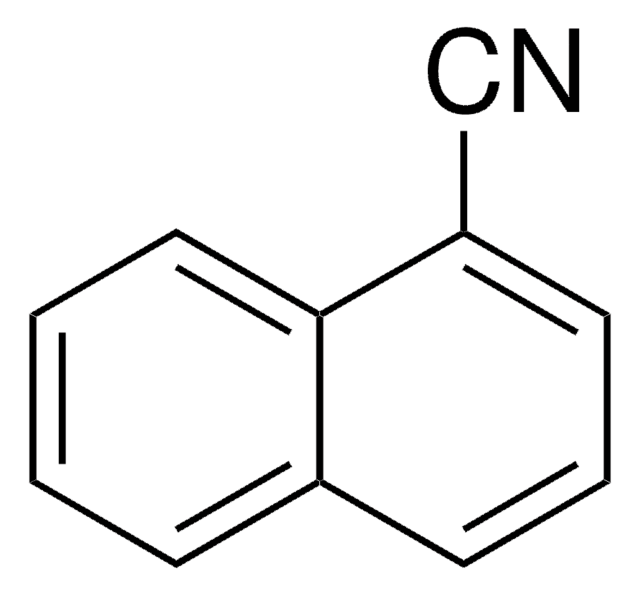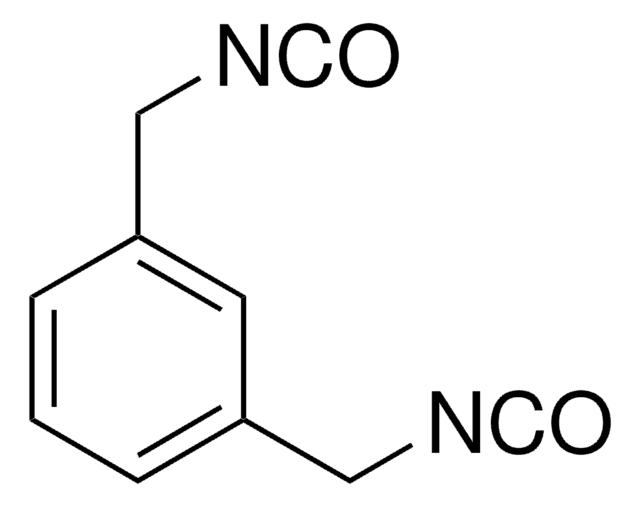Wichtige Dokumente
89870
Toluol-2,4-diisocyanat
purum, suitable for electron microscopy, ≥98.0% (GC)
Synonym(e):
2,4-Diisocyanato-toluol, 4-Methyl-m-phenylendiisocyanat, Tolyl-2,4-diisocyanat
About This Item
Empfohlene Produkte
Qualität
purum
Qualitätsniveau
Assay
≥98.0% (GC)
Form
liquid
Methode(n)
electron microscopy: suitable
Brechungsindex
n20/D 1.567
bp
124-126 °C/18 mmHg (lit.)
251 °C (lit.)
mp (Schmelzpunkt)
19.5-21.5 °C (lit.)
Dichte
1.21 g/mL at 20 °C
1.22 g/mL at 20 °C (lit.)
SMILES String
Cc1ccc(cc1N=C=O)N=C=O
InChI
1S/C9H6N2O2/c1-7-2-3-8(10-5-12)4-9(7)11-6-13/h2-4H,1H3
InChIKey
DVKJHBMWWAPEIU-UHFFFAOYSA-N
Suchen Sie nach ähnlichen Produkten? Aufrufen Leitfaden zum Produktvergleich
Anwendung
Sonstige Hinweise
Signalwort
Danger
Gefahreneinstufungen
Acute Tox. 1 Inhalation - Aquatic Chronic 3 - Carc. 2 - Eye Irrit. 2 - Resp. Sens. 1 - Skin Irrit. 2 - Skin Sens. 1 - STOT SE 3
Zielorgane
Respiratory system
Lagerklassenschlüssel
6.1A - Combustible acute toxic Cat. 1 and 2 / very toxic hazardous materials
WGK
WGK 2
Flammpunkt (°F)
269.6 °F - closed cup
Flammpunkt (°C)
132 °C - closed cup
Persönliche Schutzausrüstung
Eyeshields, Faceshields, Gloves, type ABEK (EN14387) respirator filter
Zulassungslistungen
Zulassungslistungen werden hauptsächlich für chemische Produkte erstellt. Für nicht-chemische Produkte können hier nur begrenzte Angaben gemacht werden. Kein Eintrag bedeutet, dass keine der Komponenten gelistet ist. Es liegt in der Verantwortung des Benutzers, die sichere und legale Verwendung des Produkts zu gewährleisten.
EU REACH Annex XVII (Restriction List)
Hier finden Sie alle aktuellen Versionen:
Besitzen Sie dieses Produkt bereits?
In der Dokumentenbibliothek finden Sie die Dokumentation zu den Produkten, die Sie kürzlich erworben haben.
Kunden haben sich ebenfalls angesehen
Unser Team von Wissenschaftlern verfügt über Erfahrung in allen Forschungsbereichen einschließlich Life Science, Materialwissenschaften, chemischer Synthese, Chromatographie, Analytik und vielen mehr..
Setzen Sie sich mit dem technischen Dienst in Verbindung.


